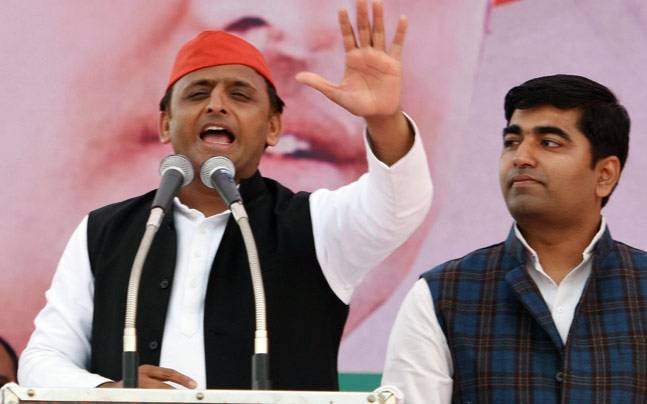By Kushagra Dixit
New Delhi, (IANS): Uttar Pradesh Chief Minister Akhilesh Yadav’s “Gujarat ke Gadhe (Donkeys of Gujarat)” jibe might have been meant to score points in a bitter electoral battle, but it has inadvertently sharpened focus on the Indian wild ass, promoted in a TV spot by no less than megastar Amitabh Bachchan in his capacity as the state’s brand ambassador.
In fact, the conservation of the species (Equus hemionus Khur), which is found only in Gujarat — having been rendered extinct in south India, Pakistan and Afghanistan — has earned the state plaudits from wildlife experts.
“The conservation of the Indian wild ass is an exemplary success story for the world to follow. The Gujarat government has, over the years, done a great job,” Wildlife Institute of India (WII) Director V.B. Mathur told IANS.
Mathur, along with experts like Nita Shah, also of the WII, have worked on conserving the species for 22 years, back from the time when it was on the verge of extinction. Today, the animal numbers well over 4,500 in the wild.
Mathur believed that the change in the farming pattern due to better irrigation has also helped in the conservation.
“It’s a unique animal… What’s commendable is that that the local government managed to balance the conservation of the species and development of the region,” Mathur added.
Shekhar Niraj, Head of TRAFFIC, a wildlife trade monitoring network that works in alliance with the WWF, said the species still faces several challenges for its survival.
“It’s one of those rare examples where both the species and its habitat are troubled. It is still threatened but its population has gone up in Gujarat,” Niraj told IANS.
The natural habitat of Indian wild ass is Rann of Kutch, where the animals are also referred to as “Riders and Guardians of the Rann” for their ability to run at speeds of over 60 km per hour.
The species, whose body frame matches that of a horse, is a sub-species of the near-threatened Asiatic wild ass (Equus heminous) that is now found only in small patches in India, Iran, Turkmenistan and Mongolia.
According to government records, the Indian wild ass was on the verge of extinction around 1970 due to lack of conservation efforts and a prevalent epidemic.
Experts said that conservation efforts by the state, central government and IUCN had helped increase the numbers of the species.
A census in 2014 counted 4,451 animals spread over 15,000 sq km in Gujarat. This was 454 more than the count of the 2009 census. The present population is estimated at over 4,800.
Thus, it’s little wonder that experts have objected to the animal being depicted as a pejorative.
“It’s not right to drag the endangered species into political feuds because it affects the conservation efforts. We should rather feel proud the species could be saved and now attracts tourists from across the world,” V.P Singh, a Uttar Pradesh-based wildlife conservator, told IANS.
What then is the fuss all about?
Akhilesh Yadav, speaking at a rally on Monday, pointed to the TV spot — obliquely referring to Bachchan — to target Prime Minister Narendra Modi and BJP President Amit Shah.
“An advertisement is there on donkeys. I urge the biggest actor of the century not to advertise donkeys of Gujarat,” Yadav said.
The advertisement promotes Gujarat’s Wild Ass Wildlife Sanctuary, one of the largest in the nation.
Gujarat Chief Minister Vijay Rupani said Akhilesh Yadav, had insulted the state with his remarks.
But then, without perhaps realising he was doing so, Akhilesh was only paying Modi back in his own coin.
During the campaign for the 2014 Lok Sabha elections, Modi had sneered at the Lion Safari, a dream project of Akhilesh Yadav to introduce the Asiatic lions (native to Gujarat) in his home town of Safai.
Modi had then wondered how the state government could take care of lions when “they had not been able to take care of (people of) the state”.
Eight Asiatic lions were bought to Safai between April and October 2014 from Gujarat and Hyderabad zoos and more followed later. However, four of those and five newborn cubs had died by June 2016.
Que sera, sera?

